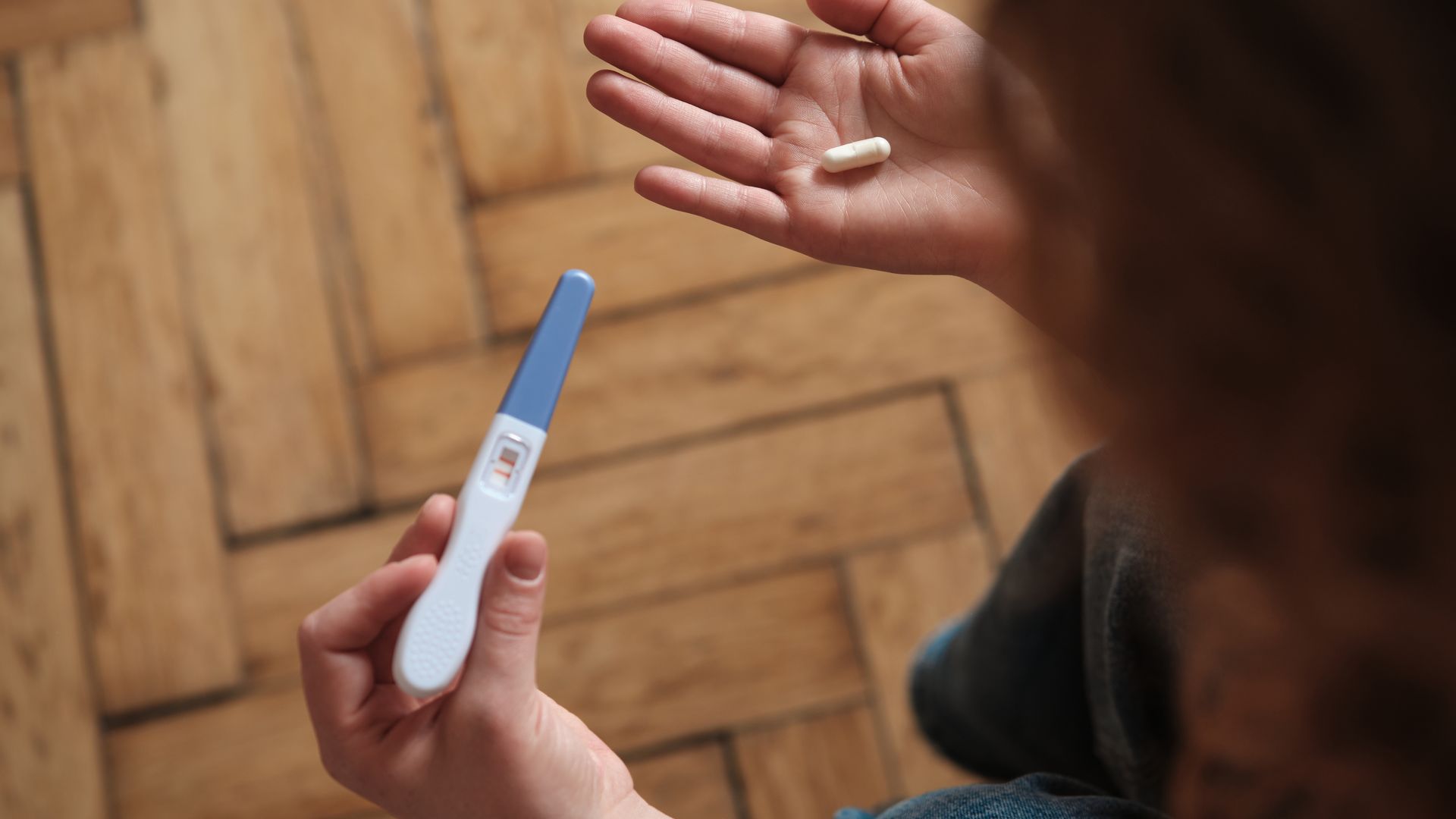
[KARAH RUCKER]
SINCE THE SUPREME COURT OVERTURNED ROE VERSUS WADE TWO YEARS AGO… ACCESS TO ABORTION FACILITIES HAS BECOME MORE RESTRICTED IN SEVERAL STATES – LEADING MORE WOMEN TO SELF-MANAGE ABORTIONS.
ACCORDING TO THE NATIONAL INSTITUTES OF HEALTH… “SELF-MANAGED ABORTION INVOLVES ANY ACTION THAT IS TAKEN TO END A PREGNANCY OUTSIDE OF THE FORMAL HEALTHCARE SYSTEM”…
AND COULD INCLUDE SELF-SOURCING MEDICATIONS – LIKE BUYING THE ABORTION PILL MIFEPRISTONE ONLINE, FOR EXAMPLE…
USING HERBS, PLANTS, VITAMINS, OR SUPPLEMENTS…
CONSUMING DRUGS, ALCOHOL, OR TOXIC SUBSTANCES…
AND USING PHYSICAL METHODS, SUCH AS QUOTE “PUNCHING ONESELF IN THE STOMACH”.
A NEW STUDY SHOWS THE USE OF THESE METHODS IS GOING UP.
THE NUMBER OF REPRODUCTIVE-AGE WOMEN WHO SAY THEY’VE SELF-MANAGED AN ABORTION JUMPED BY ABOUT 40 PERCENT SINCE THE DOBBS DECISION – ACCORDING TO THE STUDY PUBLISHED TUESDAY IN THE MEDICAL JOURNAL JAMA.
THE STUDY’S AUTHORS SAY AT THE END OF 20-21 – A FEW MONTHS BEFORE THAT DECISION – 2 POINT 4 PERCENT OF WOMEN SAID THEY’D TRIED TO SELF-MANAGE AN ABORTION…
BUT BY THE SUMMER OF 20-23 – ABOUT A YEAR AFTER THE DOBBS DECISION – THAT HAD JUMPED TO 3 POINT 4 PERCENT.
AND RESEARCHERS SAY THAT NUMBER IS LIKELY FAR TOO LOW, SINCE MANY PEOPLE DON’T TALK ABOUT THEIR ABORTIONS.
THEY SAY IT’S PROBABLY CLOSER TO 10 PERCENT, IN REALITY.
THE STUDY ALSO SAYS EVIDENCE SHOWS MORE PEOPLE ARE TRAVELING TO STATES WHERE ABORTION IS STILL LEGALLY PROTECTED.
OF THOSE WHO SELF-MANAGED AN ABORTION… NEARLY 15 PERCENT SAY THEY ENDED UP HAVING TO SEE A DOCTOR OR NURSE BECAUSE OF COMPLICATIONS…
AND NEARLY FIVE PERCENT SAY THEY HAD TO GO TO THE HOSPITAL OR URGENT CARE FOR TREATMENT.
THE WORLD HEALTH ORGANIZATION RECOMMENDS MEDICATION ABORTION AS THE SAFEST WAY TO END A PREGNANCY… HOWEVER, THIS STUDY FOUND ABOUT 25 PERCENT OF WOMEN WENT THAT ROUTE.
THE STUDY SAYS ABOUT 3 OUT OF 4 WOMEN USED LESS SAFE AND EFFECTIVE METHODS OF SELF-MANAGING ABORTION – THE MOST COMMON BEING EMERGENCY CONTRACEPTION, LIKE THE PLAN B PILL.
EMERGENCY CONTRACEPTION CAN BE USED TO *PREVENT* A PREGNANCY, BUT THE F-D-A SAYS IT WON’T MAKE A DIFFERENCE ONCE SOMEONE IS ALREADY PREGNANT.
THE STUDY’S AUTHORS SAY THE NUMBER OF PEOPLE SELF-MANAGING ABORTION IS LIKELY TO GROW AS BARRIERS TO FACILITY-BASED ABORTION GROW.
SINCE THE DOBBS DECISION – NEARLY HALF OF U-S STATES HAVE SEVERELY RESTRICTED ABORTIONS… WITH 14 BANNING IT ALTOGETHER.













